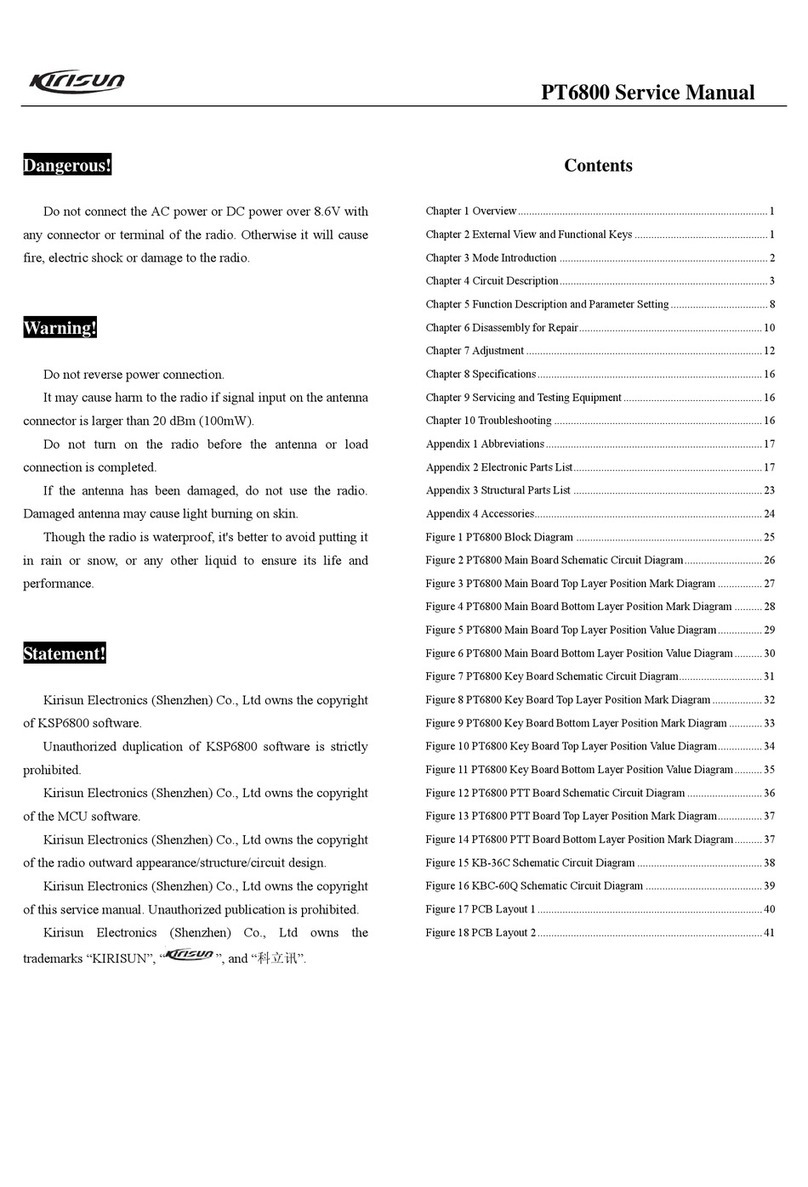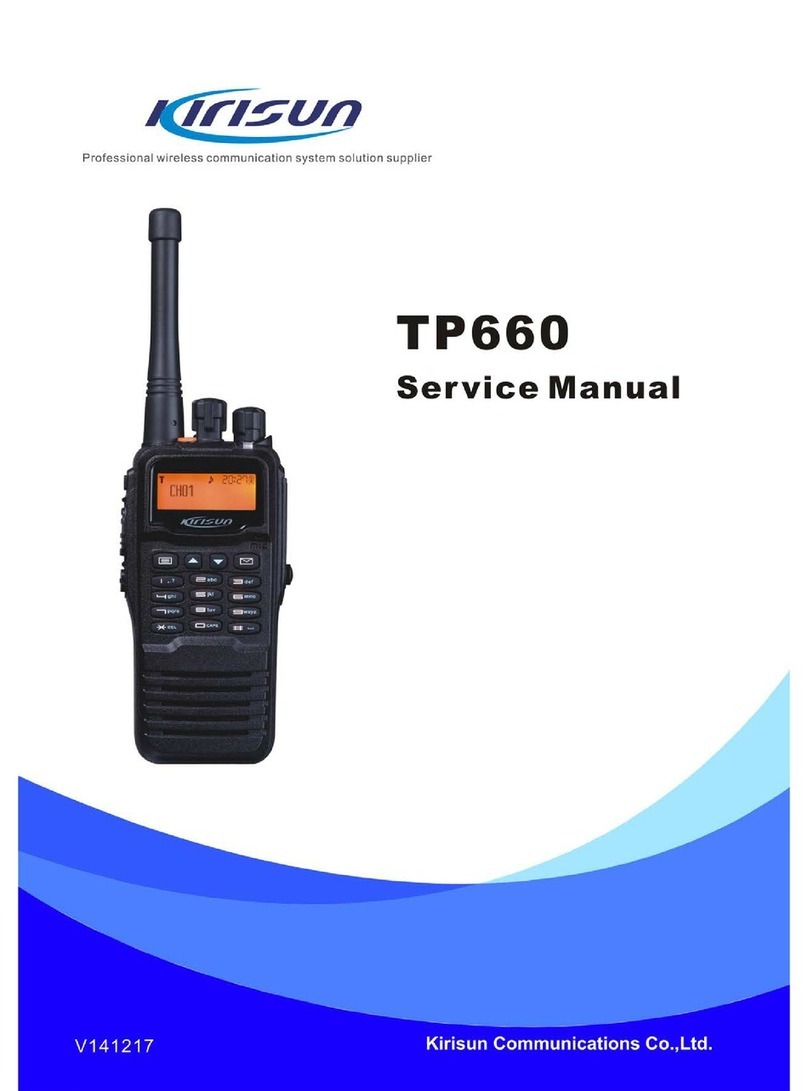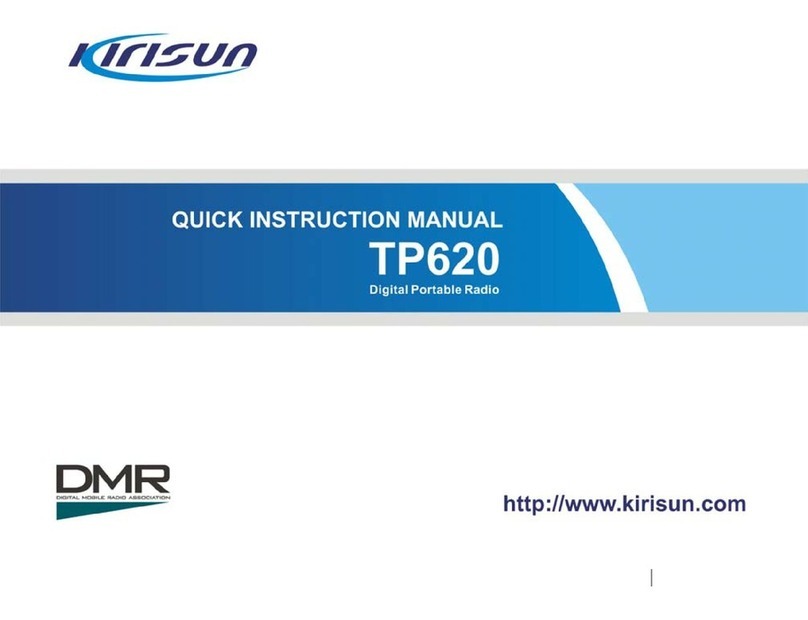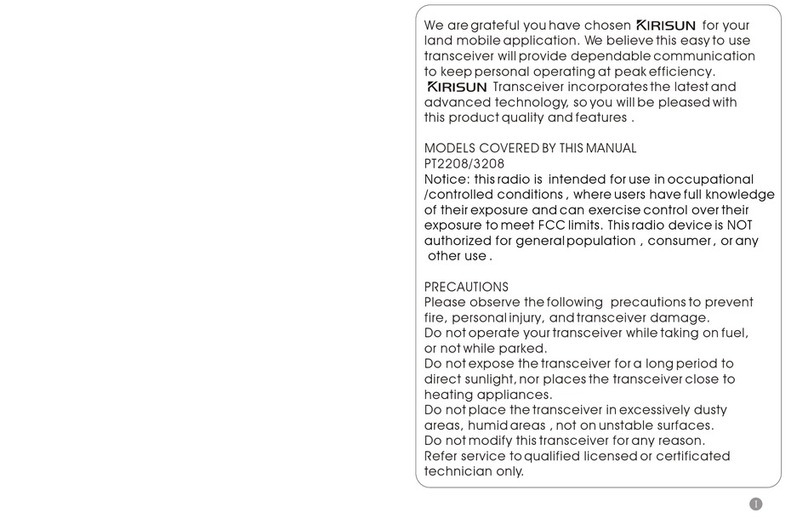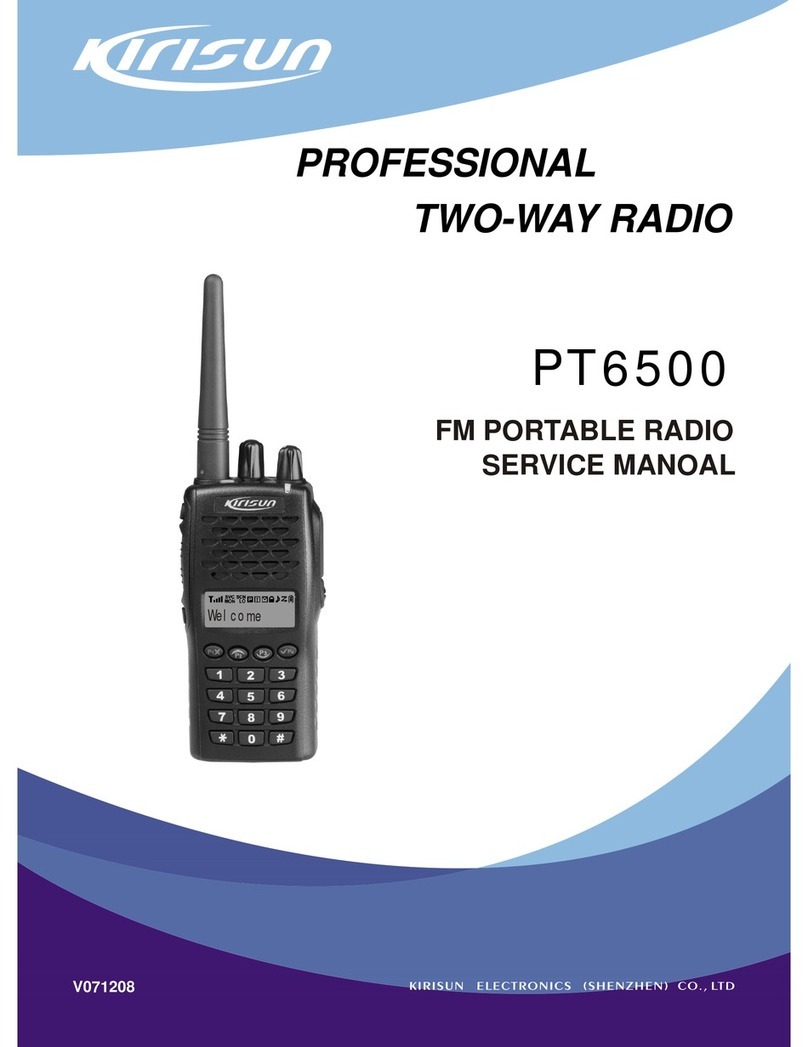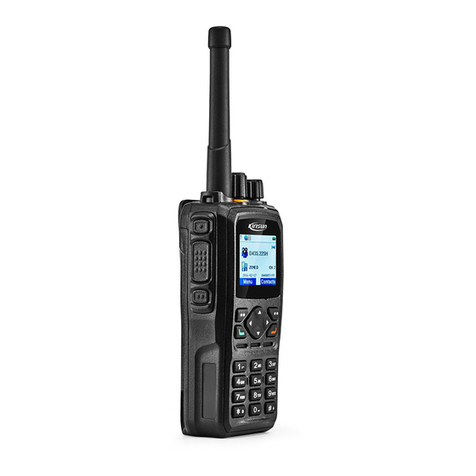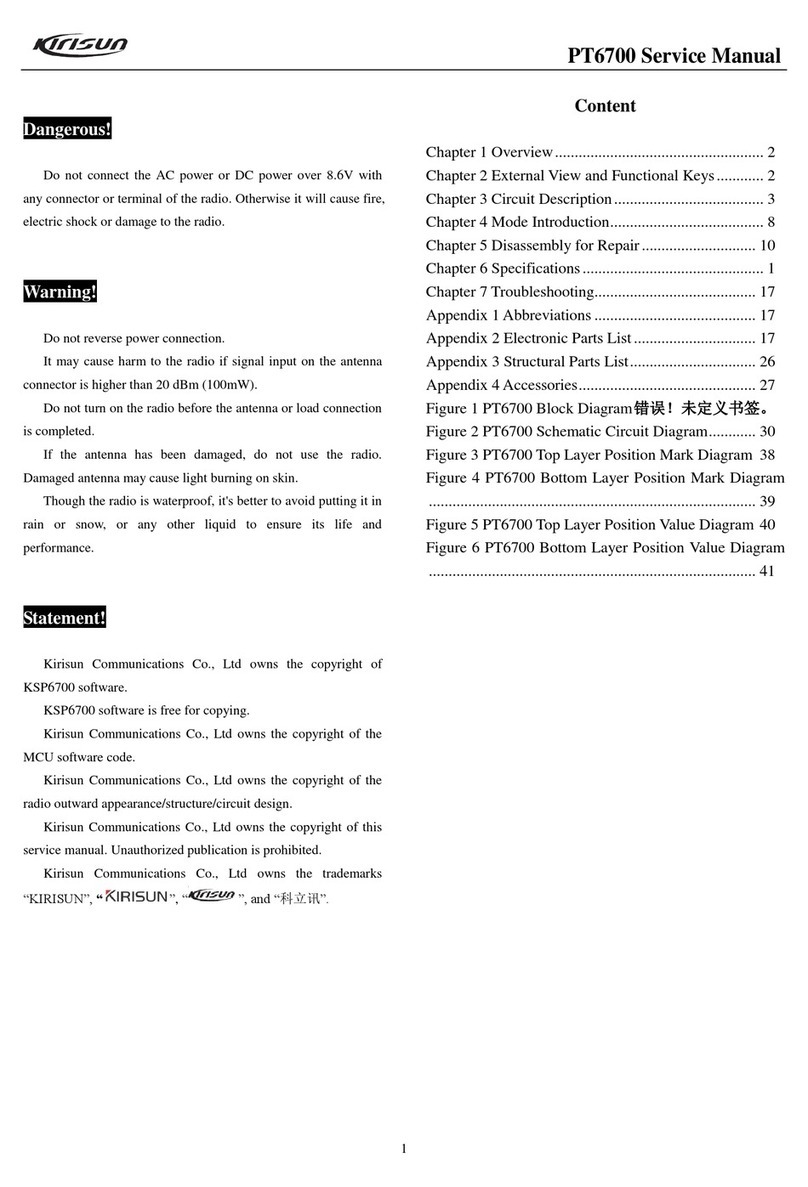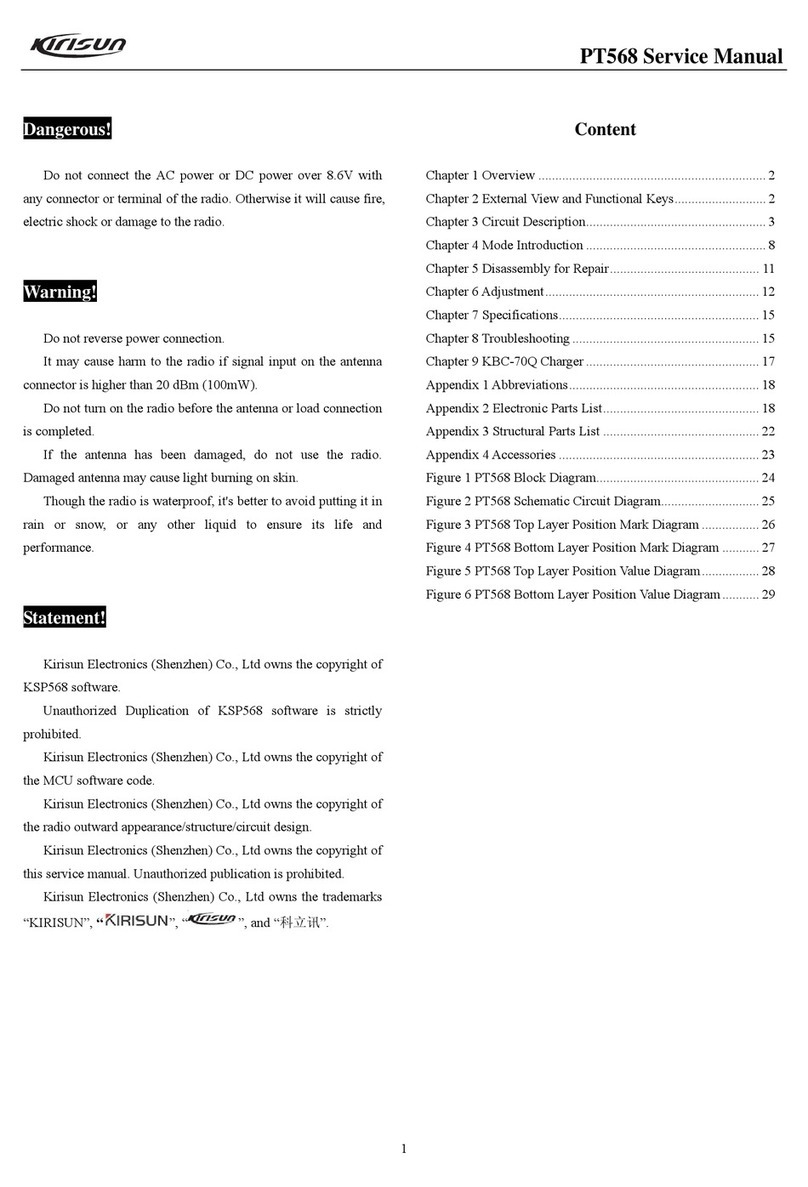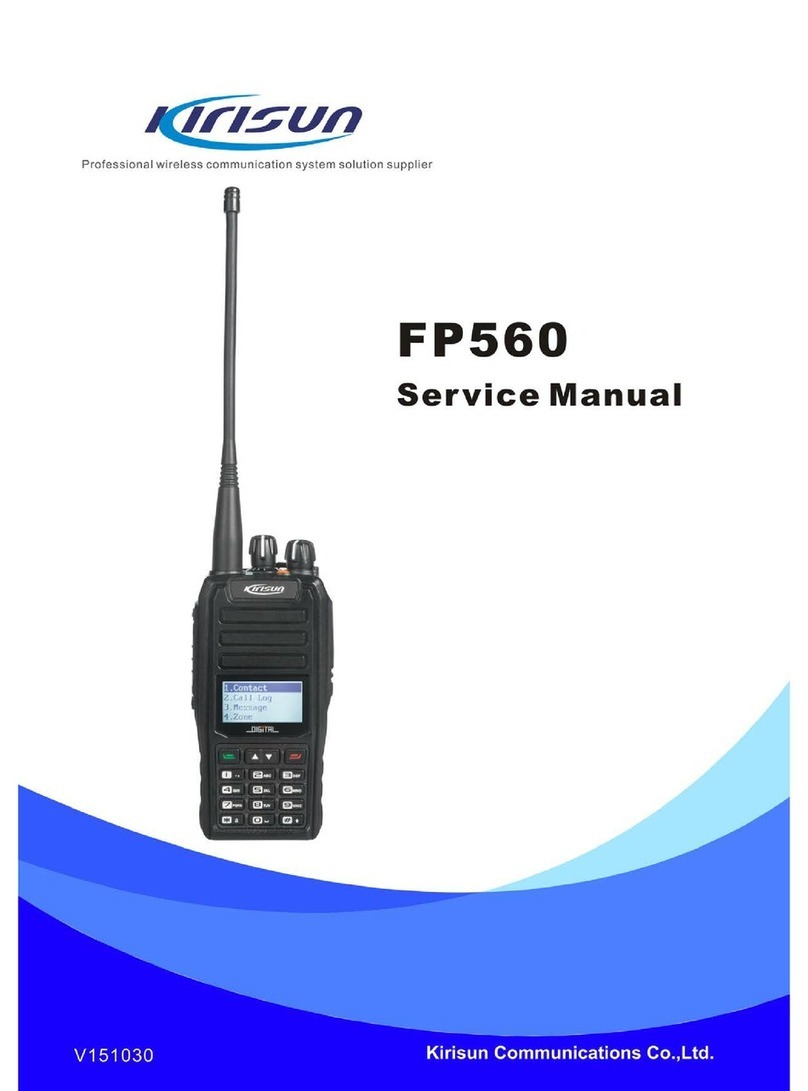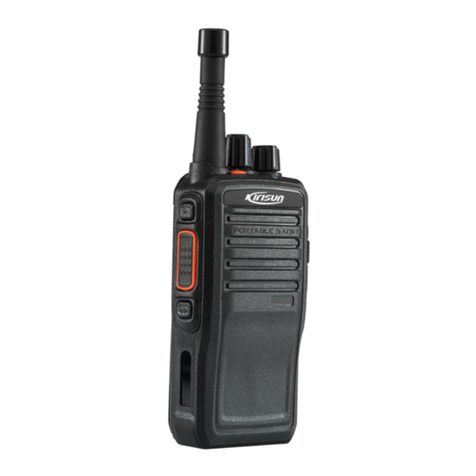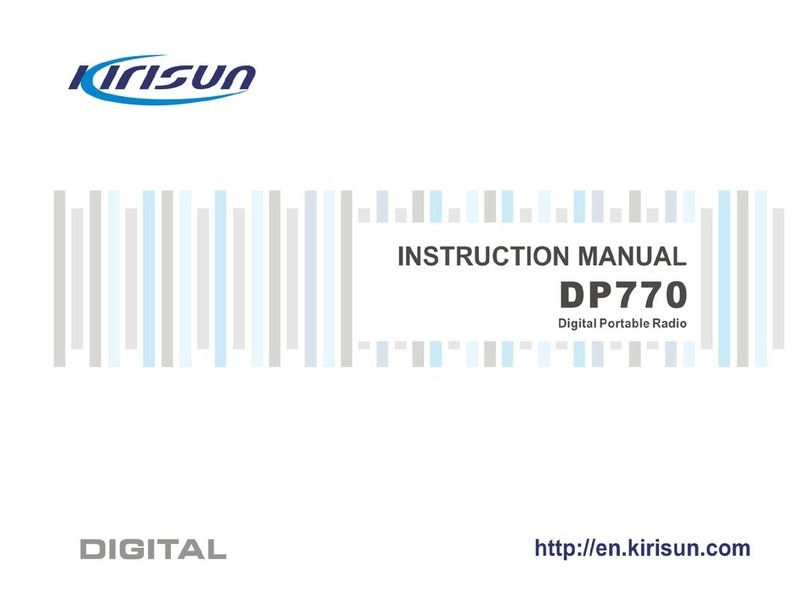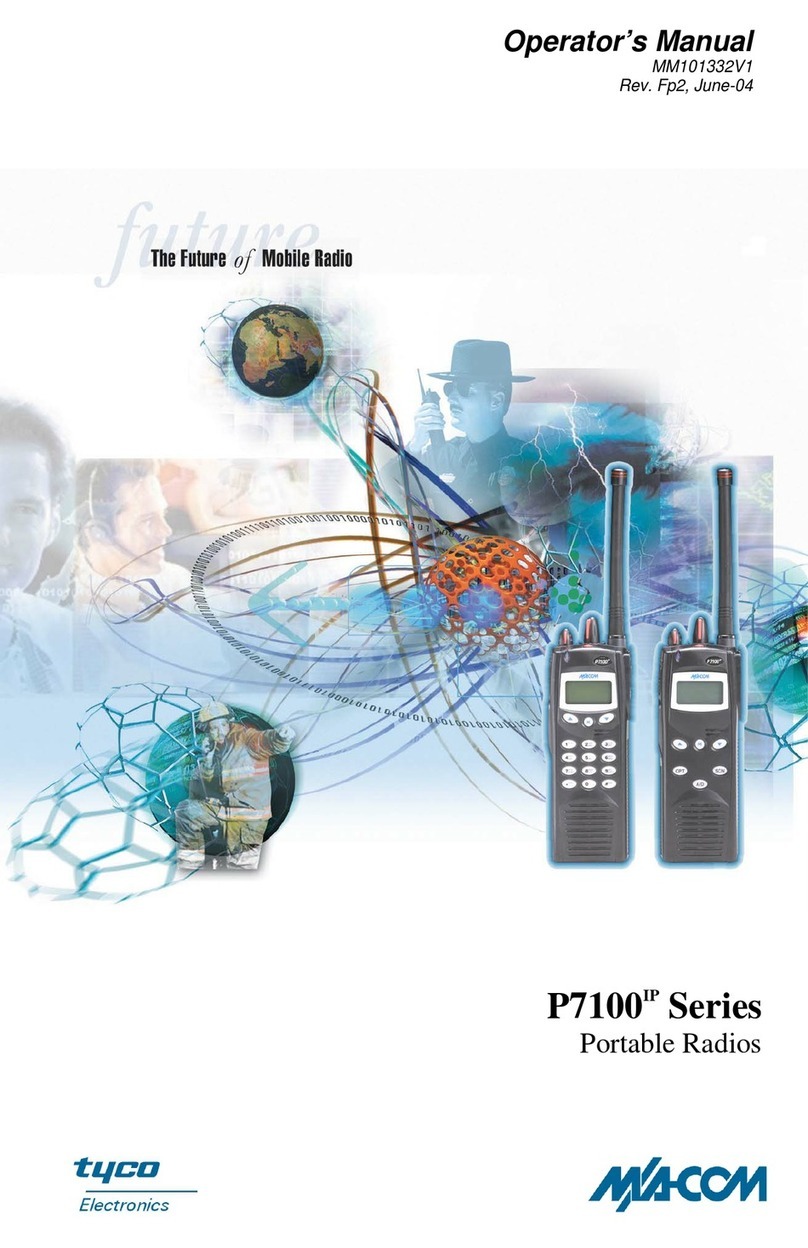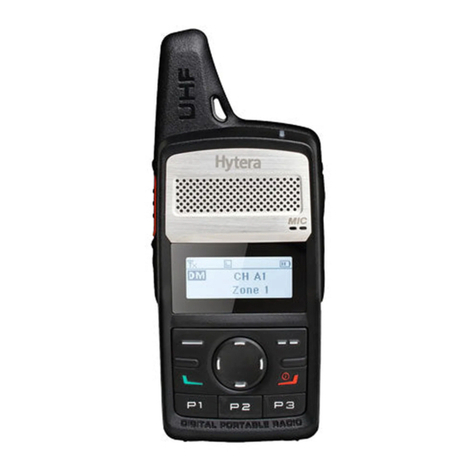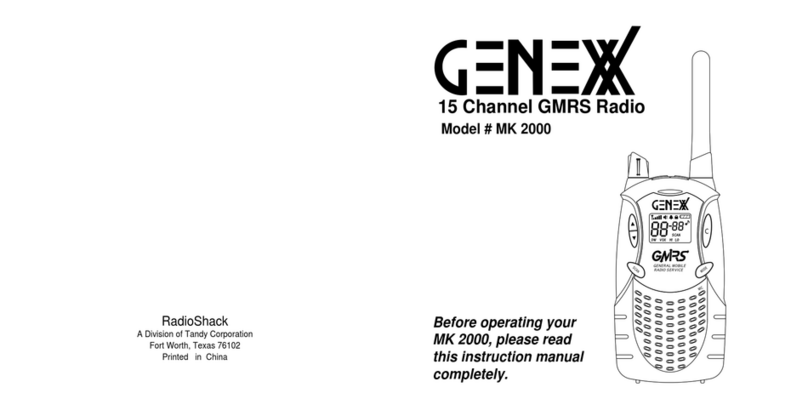PT260 Service Manual
7
During the scan, press the PTT button, the radio will transmit
the signal on the last receiving channel; if the scan stops at one
channel, press the PTT button, the radio will transmit the signal on
the currently working channel.
5. Priority channel (The priority channel must be set first)
Press the PTT button, the radio will transmit the signal on the
priority channel in the scan list.
6. Priority channel + the currently working channel (The priority
channel must be set first)
During the scan, press the PTT button, the radio will transmit
the signal on the priority channel in the scan list; if the scan stops at
on channel, press the PTT button, the radio will transmit on the
currently working channel.
7. The last transmitting channel
Press the PTT button, the radio will transmit on the last
transmitting channel.
8. The last transmitting channel + the currently working channel
During the scan, press the PTT button, the radio will transmit
the signal on the last transmitting channel; if the scan stops at on
channel, press the PTT button, the radio will transmit on the
currently working channel.
Note: The currently working channel is the channel at which the
radio stops in the following situations:
1. The radio receives the signal and stays at the channel before the
scan restarts. This channel is the currently working channel.
2. The radio receives the signal and stays at the channel before the
signal disappears. This channel is the currently working channel.
3. Press the PTT button to transmit, the radio will stay at the
channel. This channel is the currently working channel.
4. Release the PTT button to end the transmission, the radio will
stay at the channel before the “Transmitting Pause” time is over.
This channel is the currently working channel.
4.1.3 CTCSS and DCS
CTCSS/DCS is a kind of sub-audio and digital sub-audio
signal, which can realize the function of call selection and group
call. On one channel, the communication can only be realized when
the radios have the same CTCSS/DCS code. CTCCS/DCS code is
preset.
4.1.4 TOT Transmitting Timeout
TOT can prevent the user from continuously talking overlong
and prevent the current channel from being occupied overlong so as
to affect the group communication.
If you continuously transmit longer than the preset TOT time,
the radio will stop transmitting and make an alert tone. To stop the
warning tone, release the PTT button.
4.1.5 TOT Pre-alert
The radio will make an alert tone in advance before the TOT
terminates the transmission. If the continuous transmitting time
exceeds the time preset by the dealer, the radio will send out an
alert tone, but the communication can be continuing until the TOT
time is over.
4.1.6 TOT Repress
The function can be set to stop transmitting after the TOT
time is over. When the TOT time is over, and press the PTT button
again during the pre-set time, the radio will send out an alert tone
and stop to transmit.
4.1.7 TOT Reset
This is the interval between the pre-set TOT time is over and
the time to release the PTT button and reset the timer. If the time to
release the PTT button is shorter than the reset time, the TOT
continues to count down.
4.1.8 Automatic Battery Saving
When the radio does not receive the signal or no operation is
done above 8 seconds, the battery saving function will be enabled.
This function will be disabled when the radio receives the signal
and the transmission is going on. There are two means to save the
battery: long time saving and short time saving. The long time
saving will prolong the standby time.
4.1.9 Low Battery Warning
When the battery voltage is very low, the LED indicator
flashes. If the battery voltage is lower than the pre-set value during
the transmission, Red LED indicator flashed. When a sound of “Du
Du” is heard, the radio stops transmitting.
4.1.10 Monitor
If no signal is received, the radio will enable the squelch
circuit to mute the speaker. Thus, the user cannot hear the
background noise.
Press the “Monitor” Key to disable the squelch circuit. Then
the speaker will send out a continuous alert tone (regardless of the
signal is received or not). The function is very useful when you
adjust the volume or the receiving signal is very weak (The voice
